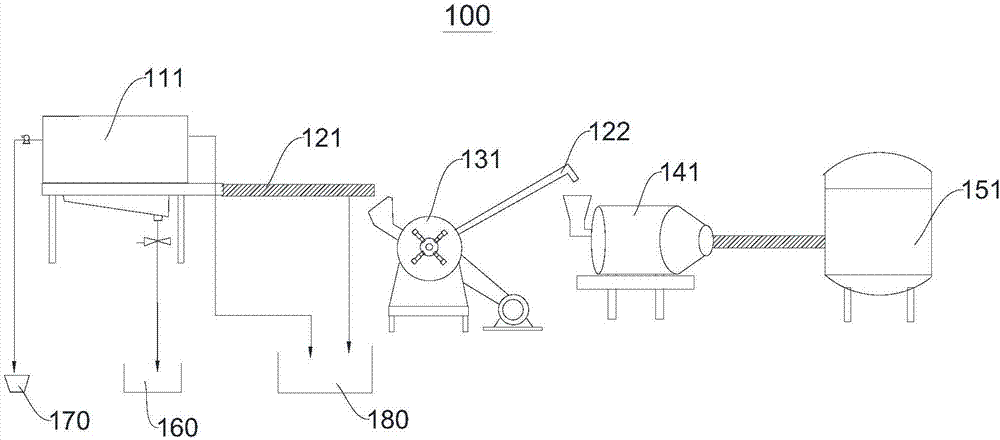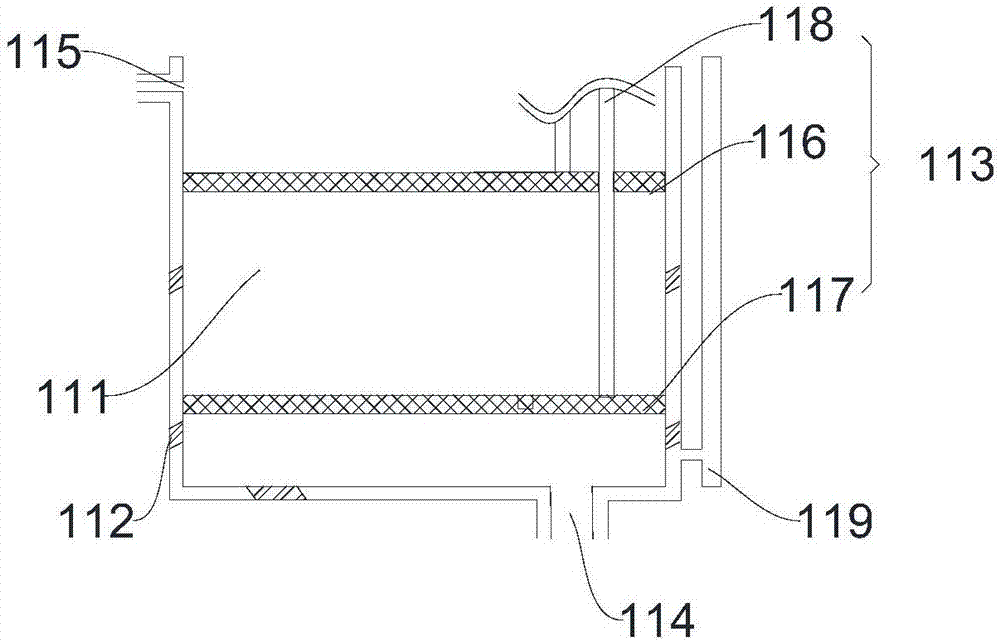Kitchen waste fermenting system and method and fermented feed
A technology of food waste and fermentation method, which is applied in animal feed, animal feed, animal husbandry, etc., can solve the problems of hidden food safety hazards for consumers, complex sources of food waste, and the spread of pathogenic bacteria, so as to achieve high feeding value and satisfy Safety standard, low cost effect
- Summary
- Abstract
- Description
- Claims
- Application Information
AI Technical Summary
Problems solved by technology
Method used
Image
Examples
Embodiment 1
[0075] In parts by weight, the materials to be fermented include: 100 parts of crushed solid waste, 2 parts of composite bacteria, and 60 parts of auxiliary materials.
[0076] Wherein, according to weight percentage, the composite bacteria include 25% of lactic acid bacteria, 15% of bacillus, 35% of brewer's yeast, 15% of bifidobacterium and 10% of acetic acid bacteria.
[0077] In parts by weight, the auxiliary materials include: 10 parts of rice bran, 10 parts of wheat bran, 10 parts of soybean meal, 20 parts of bean dregs, and 10 parts of Chinese herbal medicine. Chinese herbs are honeysuckle, dandelion, isatis root and plantain of equal quality.
Embodiment 2
[0079] In parts by weight, the materials to be fermented include: 80 parts of crushed solid waste, 1 part of composite bacteria, and 40 parts of auxiliary materials.
[0080] Wherein, according to weight percentage, the composite bacteria include 20% of lactic acid bacteria, 20% of bacillus, 30% of brewer's yeast, 20% of bifidobacterium and 10% of acetic acid bacteria.
[0081] In parts by weight, the auxiliary materials include: 5 parts of rice bran, 5 parts of wheat bran, 5 parts of soybean meal, 10 parts of corn, 10 parts of bean dregs, and 5 parts of Chinese herbal medicine. The Chinese herbal medicine is honeysuckle.
Embodiment 3
[0083] In parts by weight, the materials to be fermented include: 120 parts of crushed solid waste, 3 parts of composite bacteria, and 85 parts of auxiliary materials.
[0084] Wherein, in terms of weight percentage, the composite bacteria include 25% of lactic acid bacteria, 15% of bacillus, 35% of brewer's yeast, 10% of bifidobacterium and 15% of acetic acid bacteria.
[0085] In parts by weight, the auxiliary materials include: 5 parts of rice bran, 5 parts of wheat bran, 5 parts of soybean meal, 45 parts of corn, 5 parts of bean dregs, and 20 parts of Chinese herbal medicine. In terms of parts by weight, the Chinese herbal medicines include fenugreek, 5 parts of honeysuckle, 5 parts of dandelion, 5 parts of isatidis and 5 parts of plantain.
PUM
 Login to View More
Login to View More Abstract
Description
Claims
Application Information
 Login to View More
Login to View More - R&D
- Intellectual Property
- Life Sciences
- Materials
- Tech Scout
- Unparalleled Data Quality
- Higher Quality Content
- 60% Fewer Hallucinations
Browse by: Latest US Patents, China's latest patents, Technical Efficacy Thesaurus, Application Domain, Technology Topic, Popular Technical Reports.
© 2025 PatSnap. All rights reserved.Legal|Privacy policy|Modern Slavery Act Transparency Statement|Sitemap|About US| Contact US: help@patsnap.com



